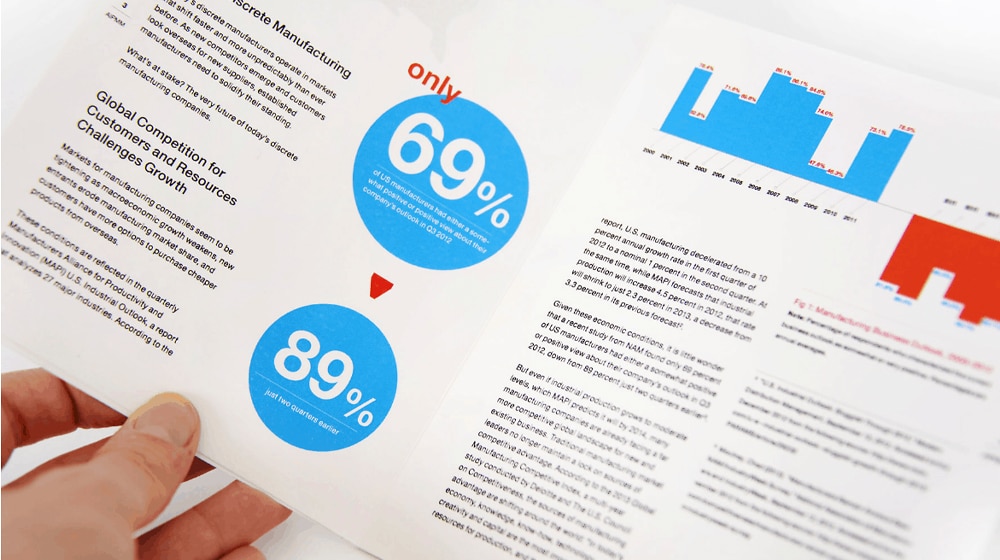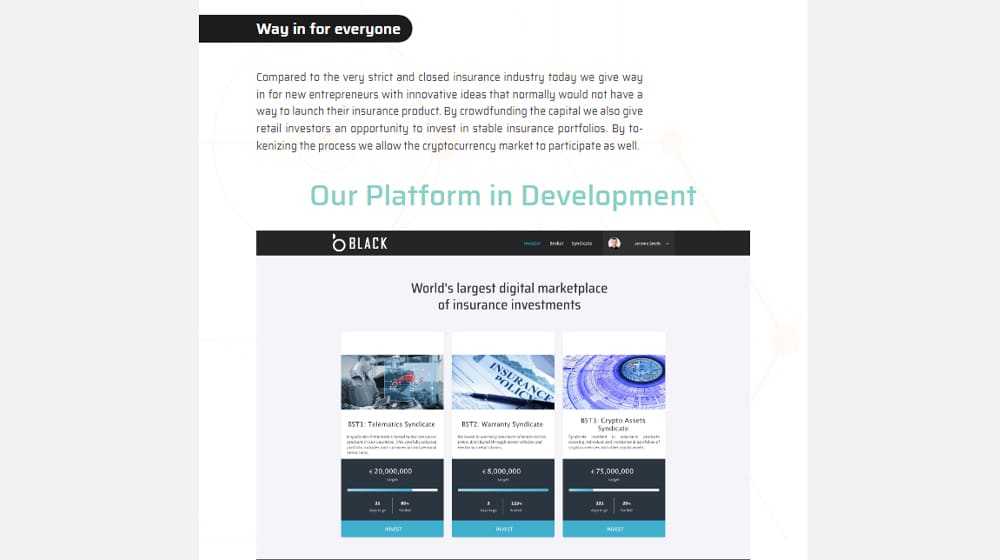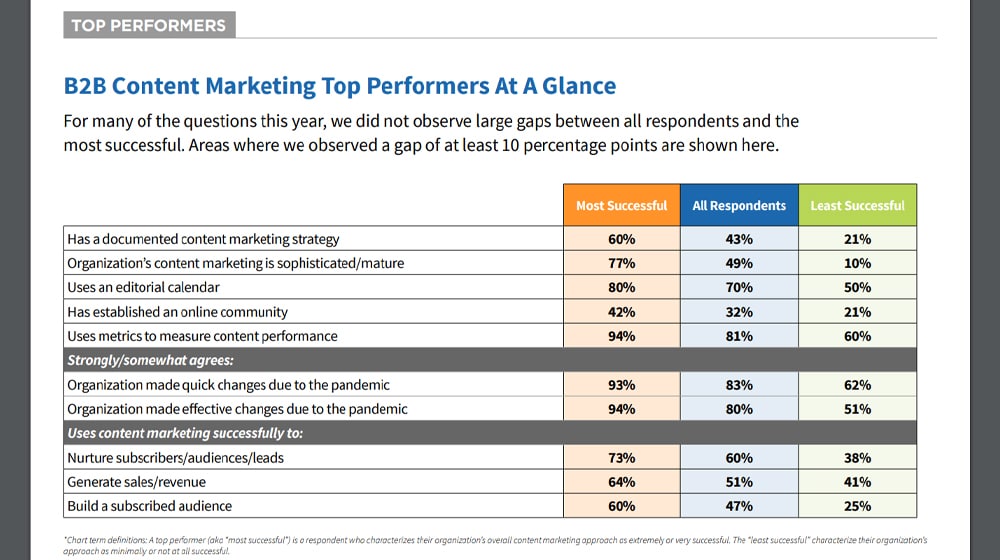In the world of business, content takes many forms. Content can be focused on sales, with ad copy, product descriptions, and landing pages. It can be focused on organic marketing with social media posts and blog content. Or, it can be focused on thought leadership and high-level publications in the form of white papers.
White papers are an interesting kind of content that most businesses should be aware of, even if they don't usually create them.
 What are they specifically, and how can you produce a top-tier white paper for your business?
What are they specifically, and how can you produce a top-tier white paper for your business?Let's dig in.
White papers today are often short statements and coverage of a company's products and services, but they didn't start out that way. In fact, the original White Paper was issued by the British Government, and for many decades, white papers were primarily developed by governments and nonprofit organizations.
In many ways, white papers have more in common with academic writing, research papers, and journalism than they do with marketing writing and ad copy. White papers started out as a way for an organization to issue a statement with research, backing, and an explanation of rationale. They were, essentially, meant to distill a complex issue down into a concise and understandable set of talking points, which both presented the position of the issuing organization and invited commentary on the issue for further discussion.
White papers also used to be quite long. Modern white papers are around 6-8 pages long and are occasionally even shorter, with plenty of space taken up by formatting, diagrams, and additional information. In fact, the ideal range of a white paper should be between 3 pages minimum and 15 pages maximum, according to industry surveys.

In the past, though, they were longer – often much longer. The first white paper known as a white paper, called the Churchill White Paper, was published in 1922 and was 31 pages long. In 1920, a paper that may have been a proto-white paper, the Review of the Civil Administration of Mesopotamia, was 149 pages long.
So, as you can see, what we think of as white papers today is very different from what they used to be.
Today, a white paper is largely used by businesses (rather than governments) to issue statements. These statements are akin to press releases; they're high-level reviews of something the company is involved in. They can take three different forms, in general:
Backgrounder white papers are white papers meant to explain a company's product, service, or entire being in-depth. Think of it as a company history and profile; it's an introduction to why the company exists, what they do, and how they benefit their audience in doing it.

For example, this White Paper from Black Insurance goes into detail about who they are, what they do, and how they do it. It's exceptionally long for a modern white paper – 37 pages, specifically – but a good portion of that is taken up with images and diagrams, so it's not as dense as it seems.
The problem solver white paper is less focused on the company and more focused on the problem the company is working to solve. While it can position the company as the solution to the problem, it doesn't need to; it's more often meant to showcase the company's thought leadership and authority in the niche.

For example, Aetna's white paper on Cardiovascular Disease showcases one of the world's foremost causes of death, and while it doesn't position Aetna as the solution to that problem, by existing as a top-level report, it positions them as an authority in the space.
The industry report white paper is another thought leadership white paper. It's used to present the state of an industry as a whole, analyze trends and showcase common problems and solutions. Again, like the problem solver, it's meant more to build authority on the part of the creator rather than promote any given product.

An example of this kind of white paper is the Content Marketing Institute's Annual B2B Content Marketing Benchmarks, Budgets, and Trends analysis. Published every year for over a decade, this high-level analysis of the industry is a hugely relevant and useful resource for content marketers in the B2B space.
If you're looking to get into white papers and publish one for your business, you want to make the best paper you can, right? So, what are the key elements of a great white paper?

Every white paper needs to have a tight focus on a specific topic. That topic needs to meet certain criteria; otherwise, the white paper will fall flat.
This is why so many companies write about themselves; what else do they have where they are the best authority? Unfortunately, many white papers end up overly self-promotional and thus fail the second point. As much as many business owners don't like to admit it, the average person doesn't care about their brand journey.
I've written before about how important having a purpose is in the content you create. That's even more true with white papers. You need to define a specific audience you're trying to target, so you can have a specific focus and a specific goal.
Knowing your audience helps you define everything from the complexity of the topics you cover to the level of industry jargon you assume the audience will know. Getting it wrong means you'll either be giving the equivalent of a child's book to a PhD, or giving a PhD Thesis to a child.
The introduction of your white paper is arguably the most important part. It needs to hook your audience far more than the usual blog post or eBook intro because if your audience isn't hooked, they aren't going to read the rest. That's fine for a blog post, but a white paper has a much higher investment behind it, so a failure is a lot worse.
A good intro will introduce the topic, but more importantly, it engages the specific audience and explains to them precisely what benefit they'll get from reading the white paper through.
The flow from point A to point B to point C in your white paper should be more than just a meandering train of thought. It needs to be deliberate, with logical consistency and an easy-to-follow path. You don't need to couch it in a story as the word narrative implies, but you certainly can. A white paper formatted as a case study of an individual, branching out to extrapolate how that individual's experiences are reflective of the industry as a whole, is a powerful format.
A good white paper is deep, with a ton of useful and unique information and insight. You want this to be used as an industry resource for months or years going forward. Plus, establishing a data-driven format gives you the opportunity to create a series, like the Content Marketing Institute example above.
Good white papers are often extremely good in terms of graphic design. They make frequent use of images, diagrams, illustrations, and charts to present their information and add flavor to the narrative flow of the paper itself.
The ending of a white paper is nearly as important as the opening. It wraps up the core value of the white paper, and it's generally your only opportunity to add in a sales pitch or recommend your business. Since the bulk of the white paper is informative, the conclusion is where you get to dip into sales or include a call to action.
Creating a good white paper starts with topic ideation. For those of you who just groaned, yes, you have to brainstorm topic ideas just as much here as for your content marketing.
You need three things defined before you can start to outline a white paper.
Who are you writing to, about what, and why? Once you have all three of those defined, then you know what you need to write, what you need to give your audience to make sure they're engaged, and what kind of research you need to do to make it compelling.
The second step in writing a great white paper is that research. You want unique and relevant data only you can provide. Maybe that's an in-depth case study of a client or a deep industry survey. Maybe it's data only you can harvest aggregated across your clients. Whatever it is, it needs to be something only you can provide; otherwise, it doesn't offer enough unique value to be worth a white paper.

Once you have all of this down, you can start outlining. You have your purpose and your audience, and you have your data; now sculpt the narrative. Determine the problem you want to introduce and elucidate. Elaborate on why the problem is important to address and why it's a modern challenge. Convince your readers it's a problem that needs solving and then introduce your data on how it may be solved. Lead up to your final pitch, whatever that may be.
You'll probably need to create several drafts of the outline alone. You may need to do more research or discard some of the data you already have as irrelevant to the actual conclusions you want to make. It will take iterative refinement to develop the outline you need.
Now, finally, you can write the actual white paper. Use compelling language targeted at the right education and familiarity levels of your audience. Start with your intro and your abstract. Proceed through the piece, keeping everything punchy and compelling as you go through. Again, having multiple drafts is normal and helps you refine the piece along the way.
Next, you can do your editing, formatting, and graphic design. Figure out how the white paper's information fits on the page. Consider using a responsive format rather than a traditional PDF. Prune down the word and page count if necessary.
Does all of the above sound like a lot of work? That's because it is, undoubtedly. Luckily, there are quite a few freelance and professional writers out there who specialize in white papers. You'll still need to define your topic and do your research, but you can rely on your writer to convert that information into a compelling, high-tier white paper.

Of course, that kind of expertise won't come cheap. Various sources place the cost of a white paper somewhere from $3,000 at the low end up to $10,000 at the high end, though, of course, not all of that goes to the writer. You may have to hire a graphic designer, an InDesign specialist, or even a research team. That said, the expense is well worth it when you see the results you can get.
Do you have questions about creating white papers? If so, feel free to ask away in the comments section down below! I'd be more than happy to help you out however I can. Or, you can skip right to hiring writers by checking out our job board.
We encourage you to share this article on Twitter and Facebook. Just click those two links - you'll see why.
It's important to share the news to spread the truth. Most people won't.